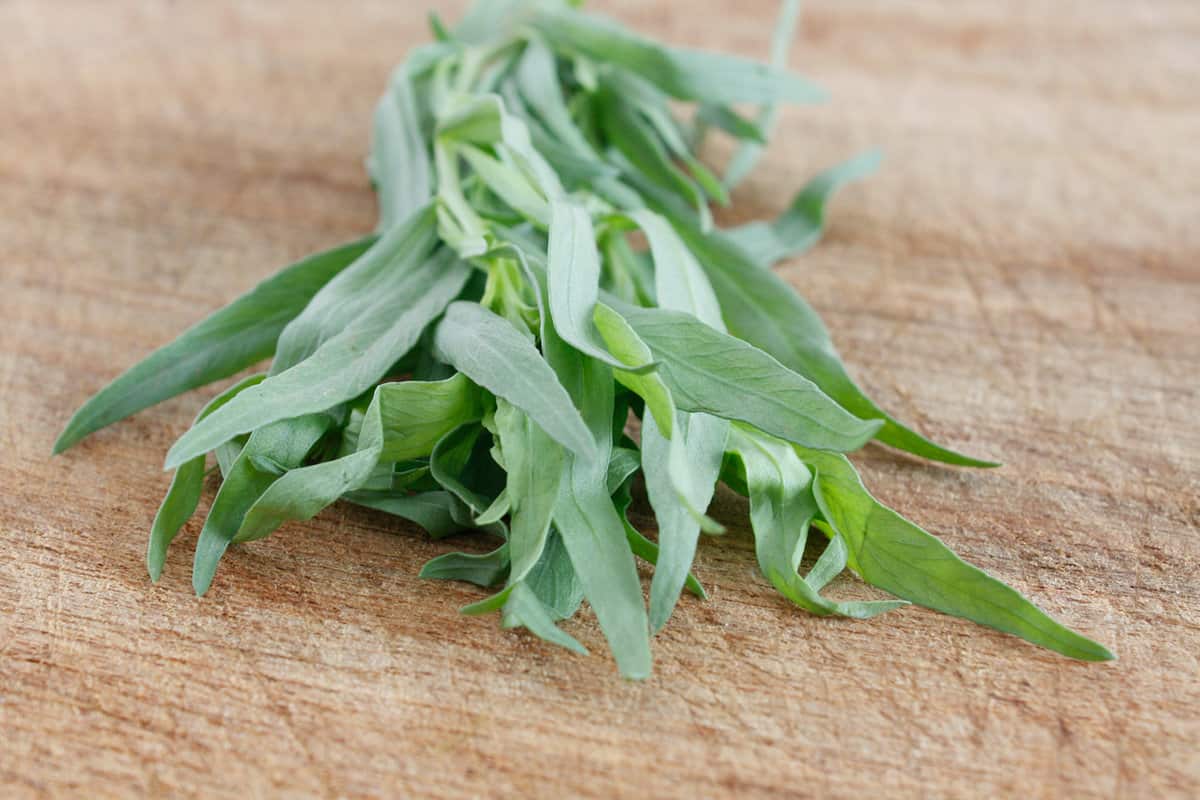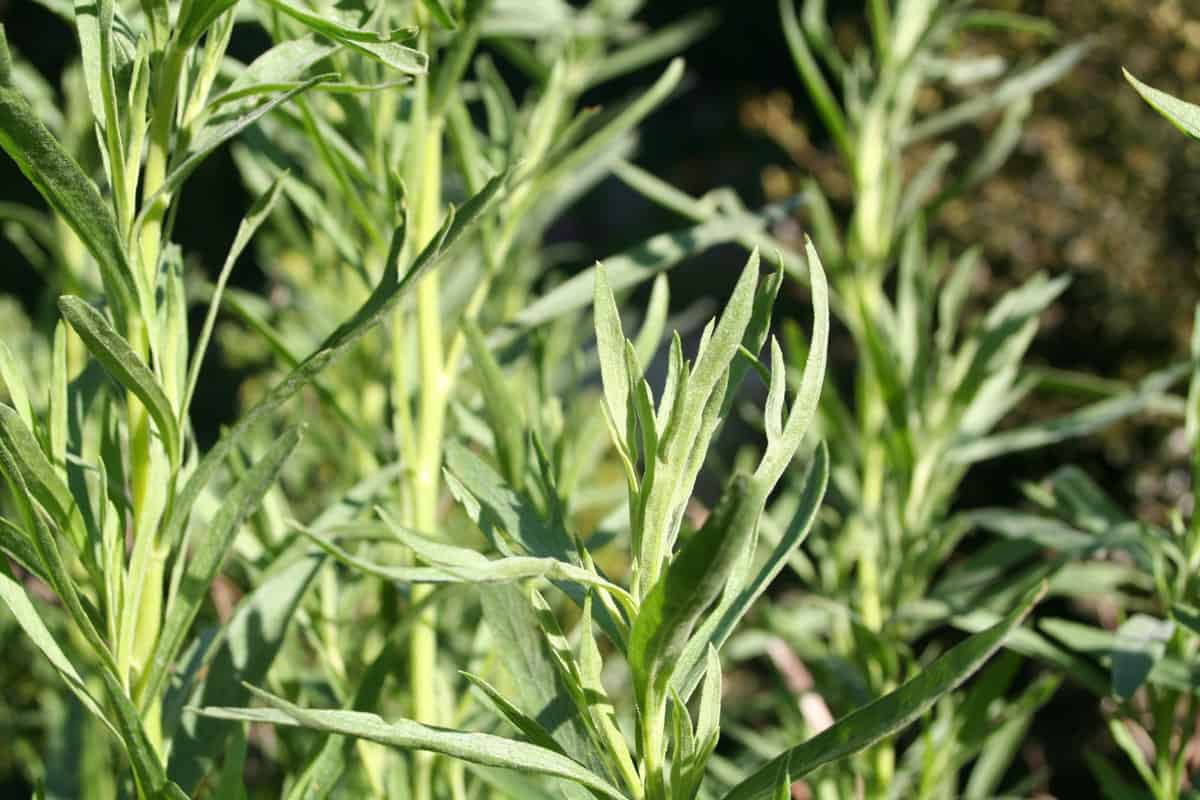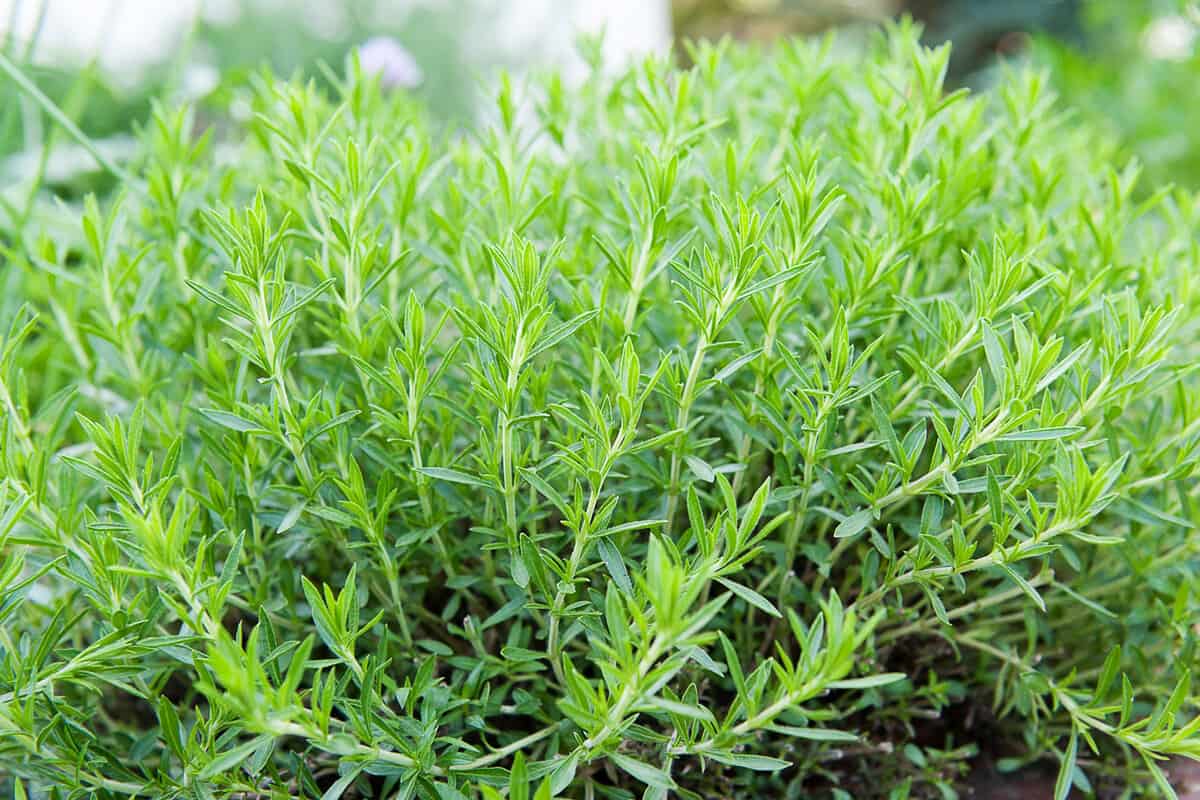Understanding how the plants in your garden need to be cared for can sometimes be confusing. Have you started noticing your tarragon looking sickly but don't know what to do next? Is there a way to save your precious herb? We have these answers and more below!
One of the main reasons tarragon die is overwatering and subsequent root rot. In addition to overwatering, the ground your herb is in could have poor drainage/be overly compacted.
Another leading cause of tarragon death is a soil-based fungus called 'Rhizoctonia,' which usually begins to kill your plant as root rot develops.
As we start, we will cover all things tarragon and discuss what to do if your plant begins to die. Whether this is your first time having issues or this is a regular thing, we're here to help. With that said, let's dive head first into this article!
![Fresh GREEN tarragon in a herb garden, Why Is My Tarragon Dying? [And What To Do]](https://gardentabs.com/wp-content/uploads/2023/04/Why-Is-My-Tarragon-Dying-And-What-To-Do.png)
What Causes Tarragon To Die?

One of the leading causes of tarragon death is too much water/moisture in the soil. Typically, as you give tarragon too much water, its roots begin to drown or "rot."
There is also a high chance of a fungus called 'Rhizoctonia' forming in the soil of overwatered tarragon, which tends to assist in the deterioration of its health.
Ideally, you want to ensure tarragon has good soil drainage to prevent water-related issues from developing. Of course, it's also good to create a routine watering schedule for your herb to keep it safe.
For those who didn't overwater or can't find signs of root rot, it's also possible your herb has a sunburn. Even though this isn't deadly, your tarragon might start to turn brown or lose its foliage.
So, the sun could be to blame if it's been a rough summer and you can't see signs of too much water.
How Can I Tell If My Tarragon Is Dying?
One of the easiest ways to tell tarragon is dying is to inspect its foliage and base. Generally, sick tarragon will change color, turning from vivid green to yellowish brown.
Furthermore, look for brown or red cankers on plant stems and towards the bottom of your herb if there's a fungal infection.
Another way to tell if a fungal disease is active is to check for yellow splotches in the soil, so there are a few tell-tale signs to keep an eye on.
Your tarragon may also have a sunburn-like we covered above, which has more of a burnt aftermath effect.
For example, if you don't see any yellow soil or brown/red cankers on your plant, the next thing to look for is the browning or crispiness of the leaves.
If it's been hot and dry outside, your plant likely looks bad because it's dehydrated and sunburnt.
Can You Revive A Dying Tarragon?

Once you determine what is causing your tarragon to become sick, removing any affected sections is essential. First, we recommend removing your entire tarragon from the soil.
Especially if there's a fungus present, you want to get rid of the infected soil immediately.
Next, you want to cut off any dead roots from your herb and make sure that everything remaining looks healthy and viable.
Many experts suggest replanting your tarragon in a pot with fresh soil, which should alleviate any diseases from before. Make sure to disinfect your shears before and after pruning.
For your new pot, make sure there are plenty of drainage holes. As we mentioned, too much moisture in tarragon's soil can result in root rot, so this is imperative.
You should also place your newly planted herb in the sun, so there won't be water pooling near your tarragon's roots.
Tarragon can be sensitive, so it's best to be gentle and take your time during the transplanting process.
Do Herbs Grow Back After Dying?
In general, herbs can revive themselves after dying or getting close to it. However, this greatly depends on what caused the illness/death, so every plant is different.
When it comes to tarragon, this herb should be able to bounce back as long as you take the proper steps to save it. For example, don't expect a diseased herb to return next spring if you sat and watched it die.
However, if you replanted it, gave it fresh soil, and pruned off any affected sections, you are likely to see a new plant grow next year.
It's also worth mentioning that most herbs are perennials. That means you can usually expect them to return for a few years before dying.
Specifically, tarragon is a perennial herb, so it should keep growing for several years on average.
How Often Should I Water Tarragon?

You often don't need to give tarragon water more than twice per week. Of course, this can greatly depend on the season and climate, so you may need to up your watering schedule accordingly.
With that said, mature tarragon may need light watering every three days during peak growing seasons, so that's something to keep in mind.
You want to check the top inch of soil around your tarragon before adding water. If it feels moist, there's no need to add any more moisture to your plant.
If it's extremely hot outside, you could mist your tarragon to ease the heat, but don't get crazy.
Although herbs don't respond well to drought, they also don't like drowning in water. It's best to find a happy medium for your plant to keep it fungus and root rot free.
What Should I Do If I Overwater My Tarragon?
The best thing you can do after overwatering tarragon is to leave it alone. Ideally, you want to stop adding water to your plant until its soil feels dry.
Since tarragon is a relatively small herb, it's easy to get carried away with watering. Therefore, don't panic if this happens to you.
It will usually take up to seven days for your plant's ground to dry out and recover, so keep this timeline in mind when/if you run into this situation.
The last thing anybody wants is to continue adding water to a sick plant, thinking they're helping when they're making the issue worse.
How Much Sun Does Tarragon Need?
You want to plant tarragon somewhere with full sun or, at most, partial shade. Regardless, this herb needs around six hours of strong afternoon sun exposure to thrive.
As mentioned throughout this article, tarragon prefers warm, dry growing conditions. Even though you need to water your plant 1-3 times a week, its soil shouldn't be soggy between those waterings.
Soil drainage is another key player, so all these conditions tie together. If your tarragon has one of these missing or incorrect, things like disease and root rot can happen.
Of course, depending on your location, your herbs may not need so much sun exposure. For example, someone in Arizona or Nevada might not need to grow their tarragon in full sun.
On the other hand, someone in a more temperate location, like Washington or Oregon, will need to have their tarragon in the full sun.
Climate and overall summer weather will impact how much sunshine your herb needs, so keep that in mind.
Will Tarragon Grow In The Shade?
As long as your herb receives a few hours of sun daily, you should be fine to plant it in partial shade. Doing this will increase the likelihood of your tarragon developing a water-related issue.
Remember, having your plant in the sun can help prevent disease and root rot, hence why we recommend it. Of course, not every garden is super sunny.
If yours isn't, it's sometimes impossible to ensure your herbs get the sun they need to grow.
Therefore, we recommend possibly moving your tarragon inside during colder, shadier seasons and placing it under a heat lamp.
Although this isn't as ideal as natural sunlight, it can help keep your herb alive through the fall and winter. Furthermore, these lamps aren't usually more than $20-$30, so they won't break the bank.
Indoor Garden Led Grow Light
This indoor growing light kit works specifically for herbs, offers a 3-9-12 hour setting, has four dimmable modes, works through LED lighting and smart technology, and saves up to 80% energy.


Follow this link to view it on Amazon.
Is Tarragon Easy To Grow And Take Care Of?

Yes! Growing tarragon is usually easy and doesn't require much setup or upkeep. That said, you want to consider the growing conditions where you live.
Since this species is native to temperate European regions, you'll want to match that if possible. You also want to ensure the soil where your tarragon is offers great drainage.
If your garden has heavily compacted soil, you might want to break it up using gravel or sand. The key here is not allowing your herb to sit in water for long periods.
As you know, this can introduce fungi to the ground, eventually wiping out your herbs entirely.
Therefore, starting your plant in a pot could be better, where you can monitor the conditions closely.
To Wrap Things Up
![Fresh GREEN tarragon in a herb garden - Why Is My Tarragon Dying? [And What To Do]](https://gardentabs.com/wp-content/uploads/2022/08/Fresh-GREEN-tarragon-in-a-herb-garden-Why-Is-My-Tarragon-Dying-And-What-To-Do.png)
Whether you have tarragon in your garden or want to plant some, it's essential to know how to care for this herb species. We found that tarragon will usually die if you give it too much water.
This can cause root rot and other fungal diseases, which are incredibly damaging to tarragon.
Additionally, it may get burnt if your plant receives too much full sun exposure. Although this isn't usually deadly, a sunburn could cause your herb to turn brown and crispy.
Made it to the end? Check out these helpful related garden posts!
18 Herbs That Like Full Sun For Your Kitchen Windowsill
How Do You Water A Balcony Plant? [A Step-By-Step Guide]
Shrubs For Pots In Full Sun [17 Great Ideas For Your Landscaping]
